
|
Astronomy Picture Of the Day (APOD)
 An Atlas V Rocket Prepares to Launch
An Atlas V Rocket Prepares to Launch
16.09.2002
The first launch of an Atlas V rocket occurred last month. The Atlas V, built by Lockheed Martin, is the first rocket in the U. S. Air Force's Evolved Expendable Launch Vehicle program. Rockets in this program can carry increasingly heavy payloads by just adding more boosters.
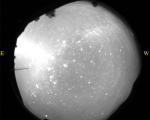 Zodiacal Light and the False Dawn
Zodiacal Light and the False Dawn
15.09.2002
An unusual triangle of light will be particularly bright near the eastern horizon before sunrise during the next two months for observers in Earth's northern hemisphere. Once considered a false dawn, this triangle of light is actually Zodiacal Light, light reflected from interplanetary dust particles.
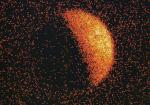 X Ray Moon
X Ray Moon
14.09.2002
This x-ray image of the Moon was made by the orbiting ROSAT (Röntgensatellit) Observatory in 1990. In this digital picture, pixel brightness corresponds to x-ray intensity. Consider the image in three parts: the bright hemisphere of the x-ray moon, the darker half of the moon, and the x-ray sky background.
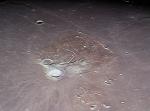 Aristarchus Plateau
Aristarchus Plateau
13.09.2002
Anchored in the vast lava flows of the Moon's Oceanus Procellarum lies the Aristarchus Plateau. Recorded from a backyard observatory on planet Earth, this sharp, amazingly colorful view nicely captures the geologically diverse area, including the brownish plateau, Aristarchus and Herodotus craters, and the meandering Vallis Schroteri.
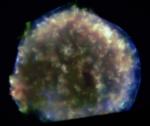 X Rays From Tycho s Supernova Remnant
X Rays From Tycho s Supernova Remnant
12.09.2002
In 1572, Danish astronomer Tycho Brahe recorded the sudden appearance of a bright new star in the constellation Cassiopeia. The new star faded from view over a period of months and is believed to have been a supernova, one of the last stellar explosions seen in our Milky Way galaxy.
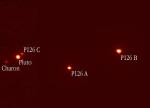 Pluto and Charon Eclipse a Triple Star
Pluto and Charon Eclipse a Triple Star
11.09.2002
Occasionally, a planet in our Solar System will pass in front of a bright star. Since stars and planets take up so little space on the sky, such events are quite rare. Two months ago, however, Pluto and its large moon Charon passed in front of a comparatively bright triple star system known as P126.
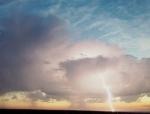 Venus Beyond the Storm
Venus Beyond the Storm
10.09.2002
A thunderstorm, lightning, a bright star and a bright planet all graced an evening sky for a short while near Bismarck, North Dakota, USA two weeks ago. Thick thunderclouds from a passing storm are the origin of a strong cloud to ground lightning strike.
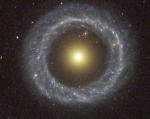 Hoags Object: A Strange Ring Galaxy
Hoags Object: A Strange Ring Galaxy
9.09.2002
Is this one galaxy or two? This question came to light in 1950 when astronomer Art Hoag chanced upon this unusual extragalactic object. On the outside is a ring dominated by bright blue stars, while near the center lies a ball of much redder stars that are likely much older.
 Too Close to a Black Hole
Too Close to a Black Hole
8.09.2002
What would you see if you went right up to a black hole? Above are two computer generated images highlighting how strange things would look. On the left is a normal star field containing the constellation Orion. Notice the three stars of nearly equal brightness that make up Orion's Belt.
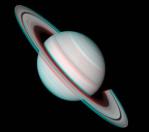 Stereo Saturn
Stereo Saturn
7.09.2002
Get out your red/blue glasses and launch yourself into this stereo picture of Saturn! The picture is actually composed from two images recorded weeks apart by the Voyager 2 spacecraft during its visit to the Saturnian System in August of 1981.
|
January February March April May June July August September October November December |
|||||||||||||||||||||||||||||||||||||||||||||||||